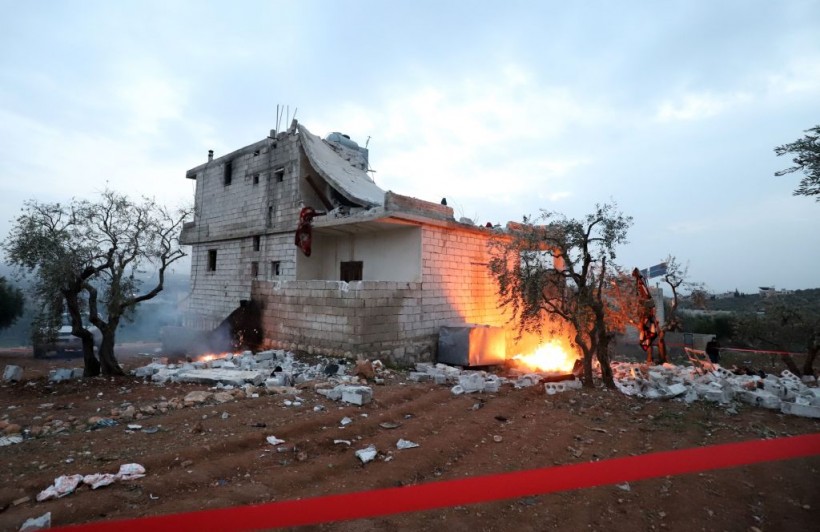
(Photo : Photo by Abdulaziz KETAZ / AFP) (Photo by ABDULAZIZ KETAZ/AFP via Getty Images)
United States President Joe Biden recently announced the death of an ISIS leader during a U.S. Special Forces raid in Syria. The individual identified as Abu Ibrahim al-Hashimi al-Qurayshi, began leading the militant group in October 2019.
United States President Joe Biden recently announced that the U.S. Special Operations forces have killed an Islamic State leader on Thursday during a raid in Syria.
The individual, identified as Abu Ibrahim al-Hashimi al-Qurayshi, was believed to have been working undercover in an attempt to rebuild the terrorist group. Authorities acknowledged that the man carried a firearm wherever he went. Nearly 15 years ago, American forces detained the man in Iraq.
BREAKING: President Biden announces the killing of ISIS chief Abu Ibrahim al-Hashimi al-Qurayshi in a special forces raid. He took over a ISIS chief in October 2019 after Baghdadi was whacked. pic.twitter.com/zIhNsDGAfN
— Shiv Aroor (@ShivAroor) February 3, 2022
ISIS Leader Killed
The first thing to know about Al-Qurayshi is that he assumed control of the militant group back in October 2019 after a U.S. military raid killed former leader Abu Bakr al-Baghdadi. Second, in writing about the militant leader last year, BBC correspondent Feras Kilani said that several Iraqi intelligence officials noted al-Baghdadi was trying to keep al-Qurayshi away from the battlefield.
The effort was done with the intent of protecting him so that he could lead ISIS in the future after al-Baghdadi. Third, the terrorist leader reportedly detonated a large number of explosives during the raid to avoid capture by the U.S. forces.
The fourth thing to note about Al-Qurayshi is he is believed to have been chosen as a successor due to his academic study of Islam and his two-decade history as part of jihadist groups. Lastly, the ISIS leader had detailed, firsthand knowledge of the organization's inner structure, as per Fox News.
The raid that ultimately led to the ISIS leader's death was set in motion months prior after a tip that the top terrorist was in hiding on the top floor of a house located in northwest Syria. President Biden, in brief remarks at the White House, said that his decision to send roughly two dozen helicopter-borne commandos was made to minimize civilian casualties.
In a statement, military officials said that attacking the area with a bomb or a missile would have been safer for the troops. However, they noted that these types of actions would have endangered more than a dozen civilians inside the house, including children.
Months-Long Operation
Biden's aides said that the Democratic president approved the attack on Tuesday morning after dozens of rehearsals, including an exercise that involved a tabletop model of the building. The president, on Thursday, called the operation a warning to all terrorist groups. He warned that it was a testament to the capability of the United States military to address threats worldwide, the New York Times reported.
The U.S. president addressed the bravery of the American troops that were part of the operation, saying "this horrible terrorist leader is no more." In a statement released on Wednesday night, Pentagon press secretary John Kirby that the U.S. Central Command, which controls military operations and activities in the Middle East, led the operation.
On Thursday, White House press secretary Jen Psaki said that al-Qurayshi's death dealt a devastating blow to the terrorist group. The official added that the incident underscores the U.S. federal government's commitment to removing terrorist threats.
During a briefing on Thursday, Kirby noted, however, that four civilians and five combatants were killed during the operation. The fatalities come as the U.S. special forces were reportedly able to evacuate 10 people inside the building that the ISIS leader was using as a hideout, according to CNN.
Related Article: Cyber Security Warning 2022: FBI Wants Olympic Athletes To Use Burner Phones in Beijing Amid Threats of Cyber Attack








